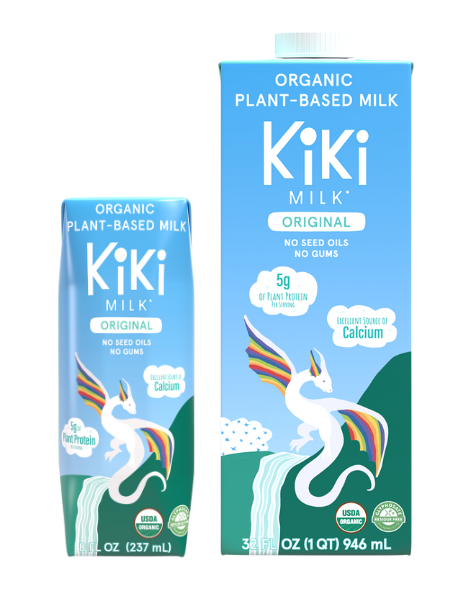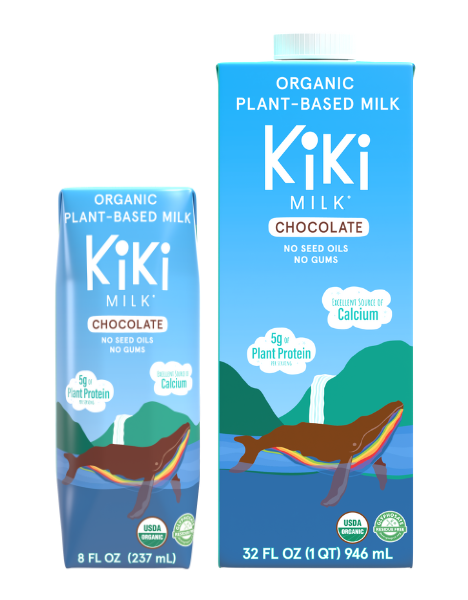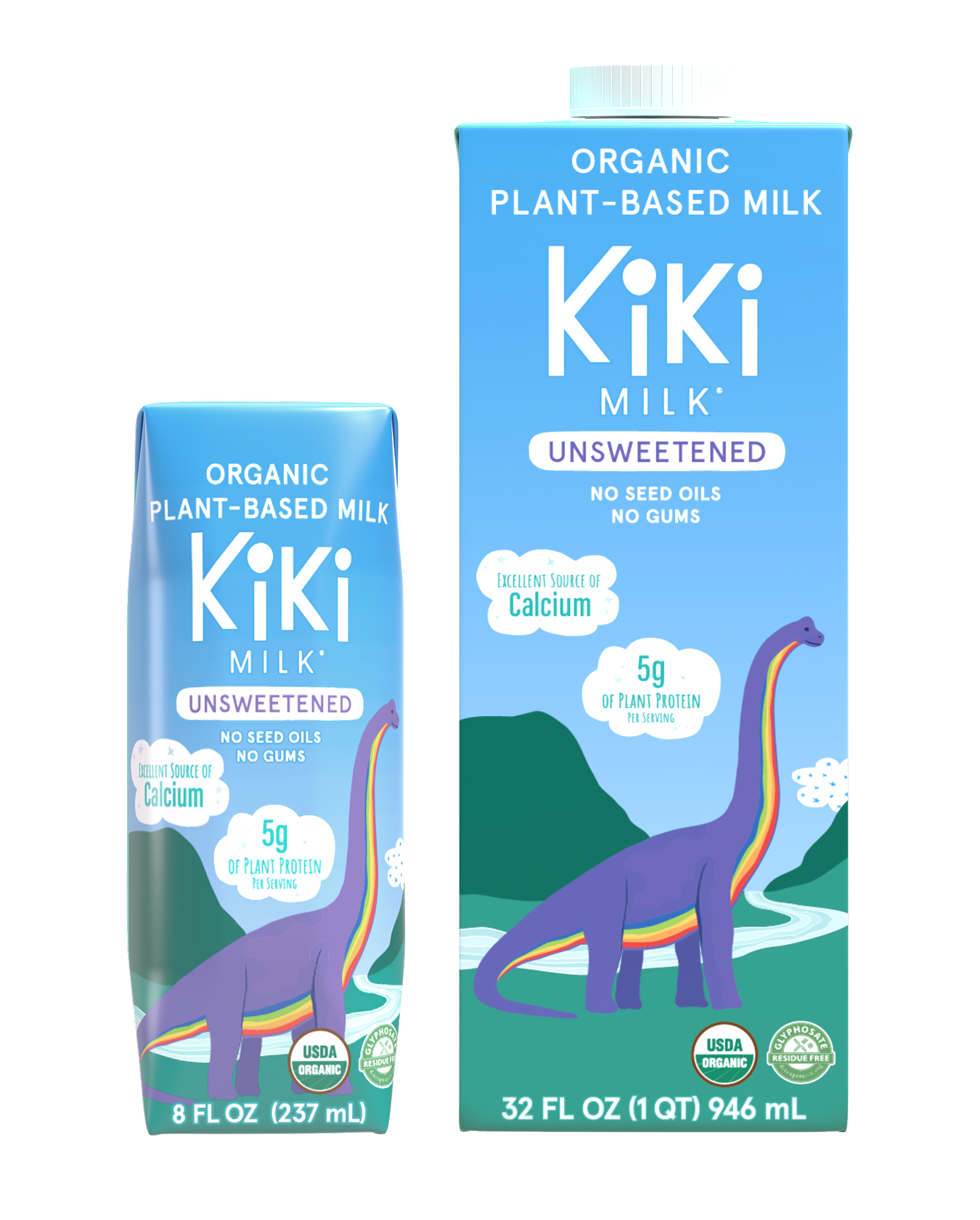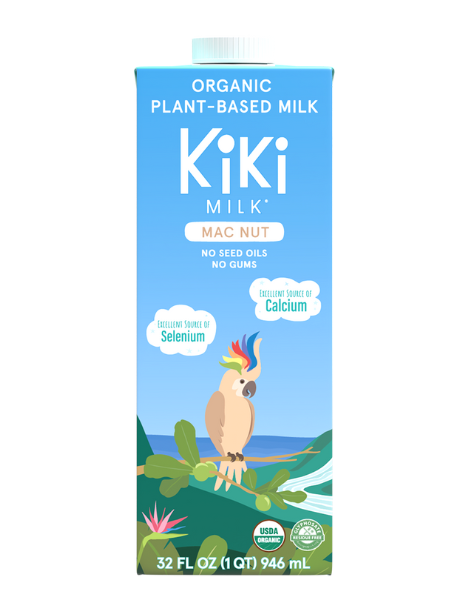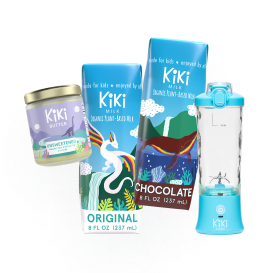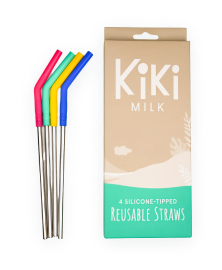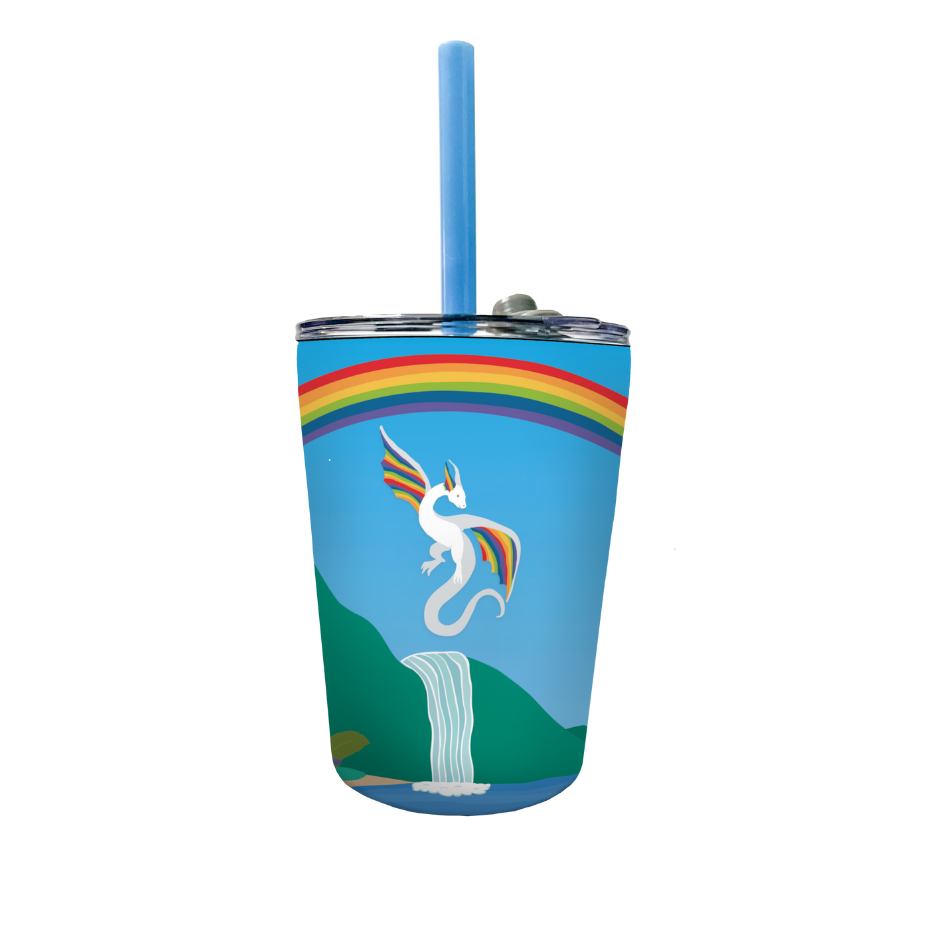This article is brought to you by Kiki Milk in collaboration with PlantBaby's Registered Dietitian/Nutritionist, Vicki Kobliner.
The importance of Vitamin D for humans is a hot topic lately and we recognize how critical it is for a child's health and development, so “why?”, you might ask, would we leave it out of the milk we take such pride in? Let’s talk about why this compound is so important, where it comes from, and the ways we believe are best for your little one to maintain optimal levels.
Why do we need it?
Vitamin D is probably best known for its partnership with calcium in building strong bones- a critical component of growing a healthy skeleton. Beyond that however, Vitamin D performs many other powerful functions such as supporting the immune system, and helping create important mood related brain chemicals. Vitamin D deficiency has been linked to certain cancers, heart disease, depression and weight gain, and Vitamin D researchers have shown correlation between a deficiency in this nutrient and illnesses such as ADHD, allergies, atopic dermatitis, autism, autoimmune disease, and flu onset to name a few.
How we get it
Vitamin D is actually not even a vitamin, but a pro-hormone that we can consume or the body can produce naturally through sun exposure. In the past, sunlight has been the primary way that humans maintained healthy levels of this important element, but that is no longer the case for many in industrialized societies. Important but less potent sources of vitamin D include foods such as fatty fish and eggs. Supplements of the active D3 form are another option, and Vitamin D supplementation is routinely recommended for breast-fed babies.
Who is at risk for deficiency?
Children consuming vegan or vegetarian diets are at increased risk of Vitamin D deficiency. While these dietary patterns, when implemented carefully, can be nutrient rich and support robust health, when not managed mindfully, they can be lacking in Vitamin D and other important nutrients. Lack of sunlight on exposed skin, which can result from indoor lifestyles, possible overuse of high SPF sunscreen, life in northern latitudes ( especially in winter) all contribute to Vitamin D deficits. People with more melanin are at greater risk, as are those who are overweight or obese.
So why isn’t Vitamin D in Kiki Milk?
Trust us, we WANT kids to get adequate amounts of good quality Vitamin D. The problem is that D3 (cholecalciferol) is the optimal form of supplementation, but the FDA only allows plant-based beverages to be fortified with the synthetic D2 ( ergocalciferol) form, which is not optimal for the following reasons:
- Decreased absorption: the natural vitamin D in cow’s milk, as well as the D the human body produces from sun exposure, is D3. Vitamins in a whole-food form, such as in raw milk, provide an easily-assimilated form of the nutrients along with important cofactors for absorption. Vitamin D2 is a synthetic and isolated form of the vitamin and, as a result, is less well absorbed
- Another argument often used against ergocalciferol (D2) is that unlike cholecalciferol (D3) it is made by radiating fungus and therefore regarded as not natural.
- Hidden sub ingredients like maltodextrin: When we looked into adding Vitamin D to our milk, we were hoping to use a whole food version from mushrooms! However, the taste and texture would have become unappealing, so that wasn’t a great option. We were then looking at using a synthetic form of vitamin D2 and had to make this decision knowing that there were sub-ingredients we weren’t so keen on, that we wouldn’t be required to put on the label. This lacked integrity to us, although most companies do it, we don’t agree with this practice. Ultimately, there are safer and better ways to get Vitamin D.
Safer and Better Ways
The best way to insure that children are meeting their needs include the following
- From April to October your child can produce enough Vitamin D from spending 15 to 30 minutes outdoors getting unprotected sun exposure on uncovered arms and legs. When wearing a bathing suit in the summer, they can generate up to 20,000 IU that way- and there is no risk of an overdose from naturally created Vitamin D, but skin should never burn. In winter, you may have to rely more on food and supplementation.
- Barring any dietary restriction, include fatty fish and eggs in the diet.
- Give your child a high quality supplement containing 600 IU of Vitamin D3 daily. A liquid form that comes in an oil base such as sunflower oil helps increase absorption of this fat soluble nutrient. It is super easy to add a drop to a serving of dairy-free Kiki Milk when ready to serve.
You want the best for your kids and so do we. That's why we prefer not to add the inferior Vitamin D2, when we know D3 is a simple and better choice.
